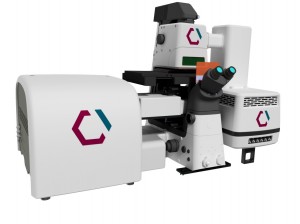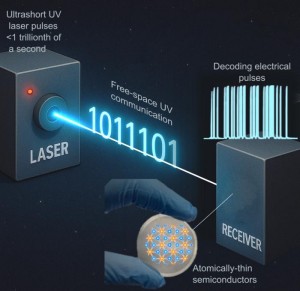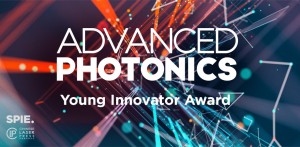
It has been nearly 200 years since the first constant electric light was demonstrated, spurring researchers throughout the world to advance the technology that brought illumination to homes and businesses.While the light that glows in our homes has gone through iterative changes in that time, advances in light technologies have resulted in devices that now serve as photocatalysts that produce hydrogen, lab on a chip in medical applications, and perovskite-based blue LEDs may provide super energy efficient lighting.
Converting visible light to UV with high efficiency
Researchers have been searching for ways to directly convert visible light with wavelengths longer than 400 nm into higher-energy ultraviolet light. While people often try to avoid ultraviolet light because of the damage it can do to skin, Nobuhiro Yanai, associate professor of Kyushu University’s Department of Chemistry and Biochemistry (Japan), is searching for ways to increase the number of these high-energy rays to power photocatalysts that enable a variety of useful reactions from producing hydrogen for use in fuel-cell vehicles to purifying indoor environments.
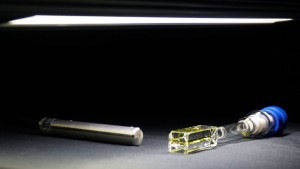
Light-powered processes could see a boost in performance under ambient light thanks to a new material system that can directly convert visible light into ultraviolet light with an efficiency that doubles previous records. Yanai’s team developed a system that achieves a light upconversion efficiency of 20% at high intensities and maintains relatively high performance even under weak light.
The team focused on a process called triplet-triplet annihilation in which energetic states called triplets are formed on molecules following absorption of visible light. Until recently, the maximum reported efficiency of conventional upconversion from visible to ultraviolet light using triplet-triplet annihilation was about 10% and could only be achieved with visible light 1,000 times more intense than sunlight. The team successfully achieved the highest upconversion efficiency of 20.5% under high-intensity light. A key to their success was the development of a novel acceptor molecule, named TIPS-naphthalene, that has a high triplet-triplet-annihilation efficiency and a low enough triplet energy to easily accept triplets from a superior donor they previously found that does not strongly absorb the upconverted UV emission.
For more see “Molecules Convert Visible Light into Ultraviolet Light with Record Efficiency”.
Energy-efficient LEDs based on halide perovskites
Illumination is responsible for approximately 20% of global electricity consumption, a figure that could be reduced to 5% if all light sources consisted of light-emitting diodes (LEDs). The blue-white LEDs currently in use, however, are difficult and costly to manufacture, which makes it more difficult to achieve a global transition.
Researchers at Linköping University in Sweden have developed efficient blue light-emitting diodes based on halide perovskites. “We are very excited about this breakthrough”, says Feng Gao, professor at Linköping University. The new LEDs may open the way to cheap and energy-efficient illumination.
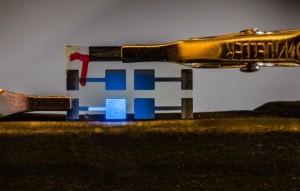
LEDs manufactured from halide perovskites could be a cheaper and more eco-friendly alternative for both illumination and LED-based monitors. Perovskites are a family of semiconducting materials defined by their cubic crystal structure. They have good emitting properties and are easy to manufacture. LEDs for green and red light have already been created with perovskites, but one color, blue, has so far been lacking, making it impossible to achieve white light.
Feng Gao’s research group, in collaboration with colleagues in Lund, Great Britain, Germany, China and Denmark, has managed to create halide perovskites that give stable emission in the wavelength range 451-490 nanometres – corresponding to deep blue to sky blue colors. Max Karlsson is doctoral student at Linköping University and joint first author of the article now published in Nature Communications. He says:
“Metal-halide perovskites are easily colour-tuneable over the whole visible spectrum by simple alloying. Unfortunately, they exhibit demixing and a blue LED turns green during operation. We have found a method that can prevent this colour shift by controlling the film crystallisation dynamics when creating the perovskite. These findings pave the way for stable perovskite alloys, not only for LEDs but also for solar cells.”
For more see “Blue Light Perovskite-based LEDs are Key to Creating White Light”.
Increasing the efficiency of polymer LEDs
Polymer LEDs (PLEDs) are a type of OLED that uses polymers as a semiconductor material. The very thin LEDs can be used in displays, indoor lighting and for medical applications such as in lab-on-a-chip devices. The LEDs contain single layers of luminescent polymers, sandwiched between two metal electrodes. Previous theories suggested that the ratio between these two types should be around 1:3, which would produce a light emission efficiency of 25%. However, subsequent experiments showed that the real value can be as high as 83%. In new research, physicists led by Yadong Wang at Hebei North University (China), found that this higher-than-expected efficiency can be reached through interactions between triplet excitons, and impurities embedded in the polymer.
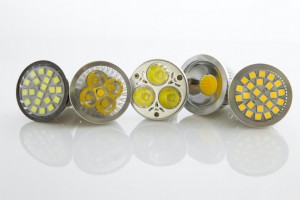
Wang and colleagues explored this idea through molecular dynamics simulations, which allowed them to recreate collisions between a non-emitting triplet exciton in a polymer chain, and an unpaired impurity electron. Their calculations revealed that light-emitting singlet excitons are among the main products of this reaction; with their overall proportion varying with the size of the impurity, and its degree of coupling with the polymer chain. For the first time, the result offers conclusive evidence that impurities can significantly boost the efficiency of PLEDs, and offers new clues about the molecular mechanisms involved. The discoveries of Wang’s team could now lead to more widespread applications of the devices in the future.
For more see “Impurities Enhance Polymer LED Efficiencies”.
Written by Anne Fischer, Editorial Director, Novus Light Technologies Today






















 Back to Features
Back to Features











